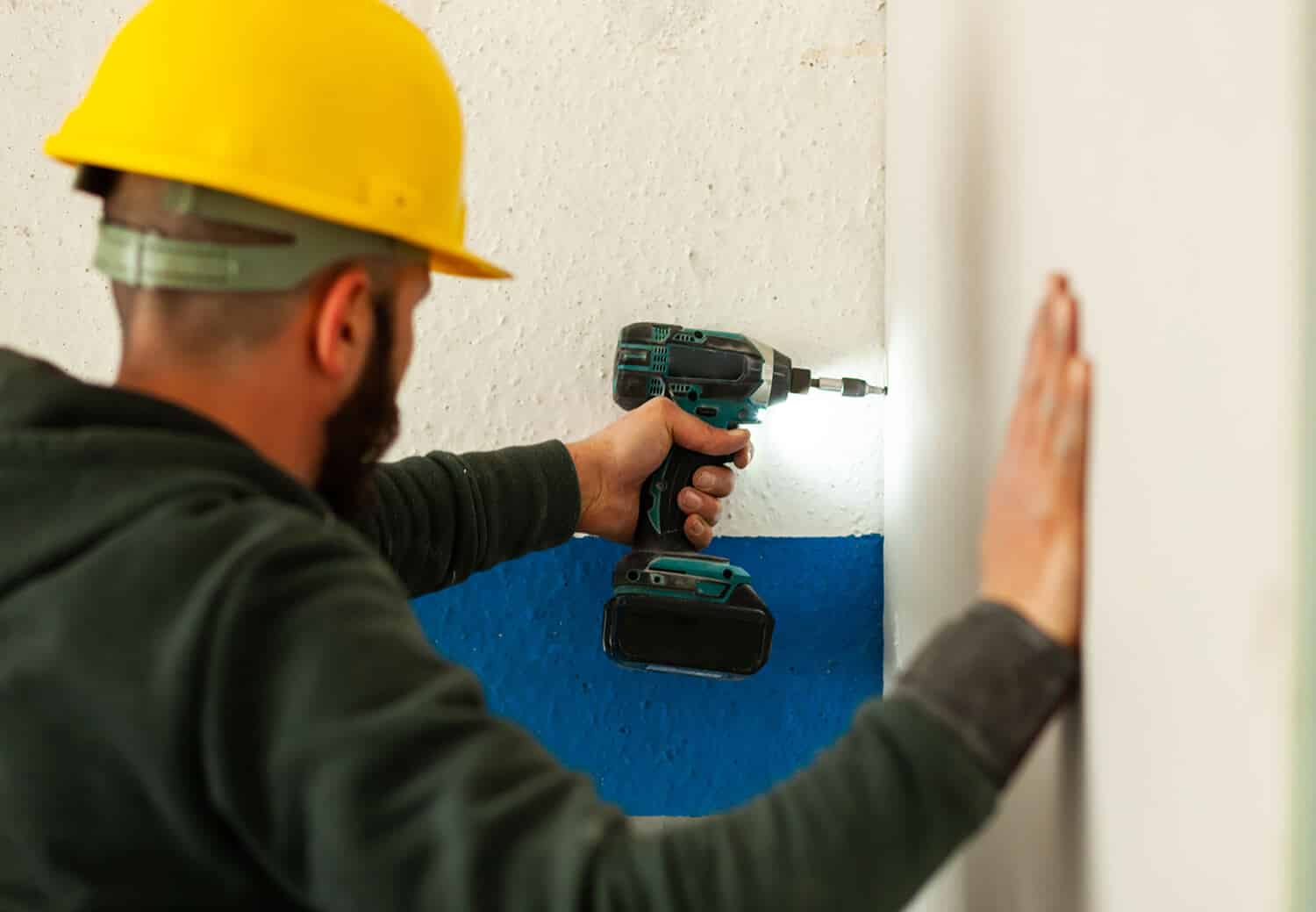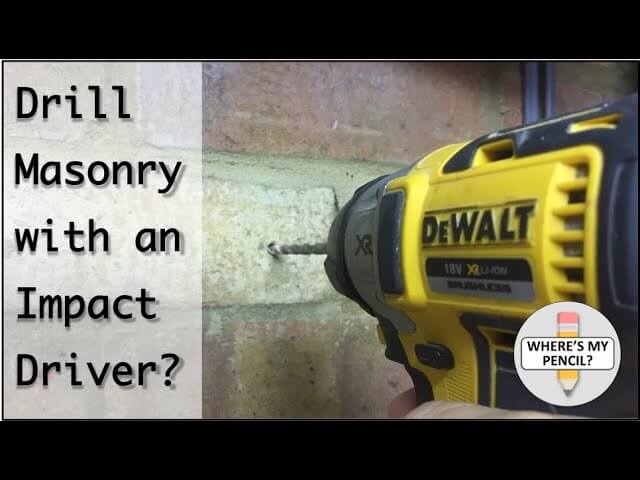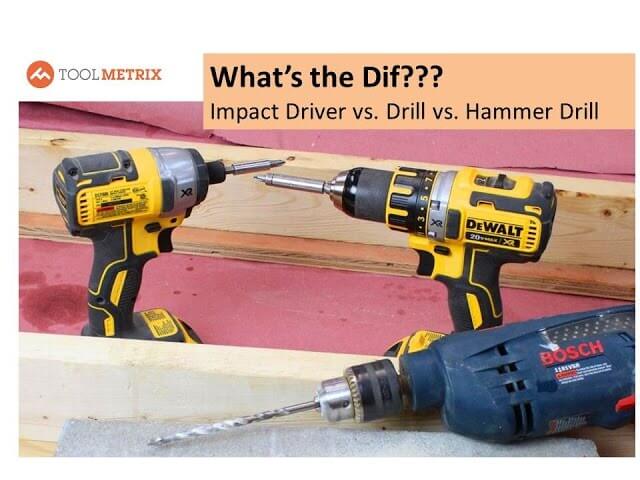Can an Impact Driver Drill Concrete?
So, you need to drill some holes in either concrete or masonry, and you’re interested in putting your high-torque impact driver to the test? Can (or at least should) this be the best course of action when it comes to drilling concrete?
The short answer is… no, not really.
While you can fit a 5-6 millimeter masonry bit to a 1/4-inch hex shank to drill a few small holes, that’s honestly about the most you can ever hope for when it comes to drilling concrete with an impact driver.
If that’s your goal, continue scrolling to find out how to drill small holes in concrete using an impact diver.
Impact Drill vs Hammer Drill for Concrete
Now, if you’re asking this question because you don’t own a hammer drill and you’re unsure about which power tool you should buy, there is a better alternative than having to choose between the two tools.
Simply bite the bullet and get yourself an affordable combo kit that gives you everything you need in one carry case.
A kit like the DeWalt DCK299M2 is one that conveniently gives you the best of both worlds and then some.
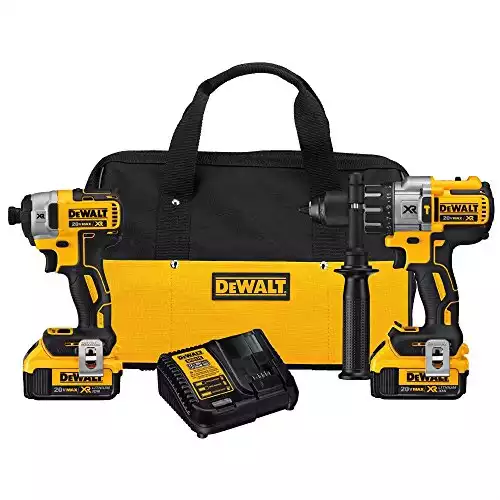 DEWALT DCK299M2 Impact Driver and Hammer Drill Combo Kit
DEWALT DCK299M2 Impact Driver and Hammer Drill Combo Kit
- Includes both a high-performance impact driver and drill driver with a robust hammer drill feature.
- Kit includes 2 lithium-ion 20V MAX 4.0Ah batteries and a compact fast charger with carry case.
- Both power tools are very lightweight and compact making them ideal for tight and confined spaces.
- Hammer drill includes 3-speed outputs for optimal performance with a maximum speed of 2000 RPM.
The above kit includes the DeWalt DCD996, which, to put it bluntly, is a darn right brilliant cordless hammer drill!
I honestly can’t remember the last time I’ve had to use a corded rotary hammer drill, as this hammer drill packs a serious punch.
I’ve used the DCD996 hammer drill to sink anchors in concrete structures to hang curtains for a home DIY project with absolute ease.
I’ve also used this beast to drill through brickwork when running pipework and punched through masonry walls for heavy-duty HVAC work.
Now, if forking out precious monies for new, outlandishly good power tools isn’t a viable option, and you’re only planning on drilling a few small holes, please, continue reading…
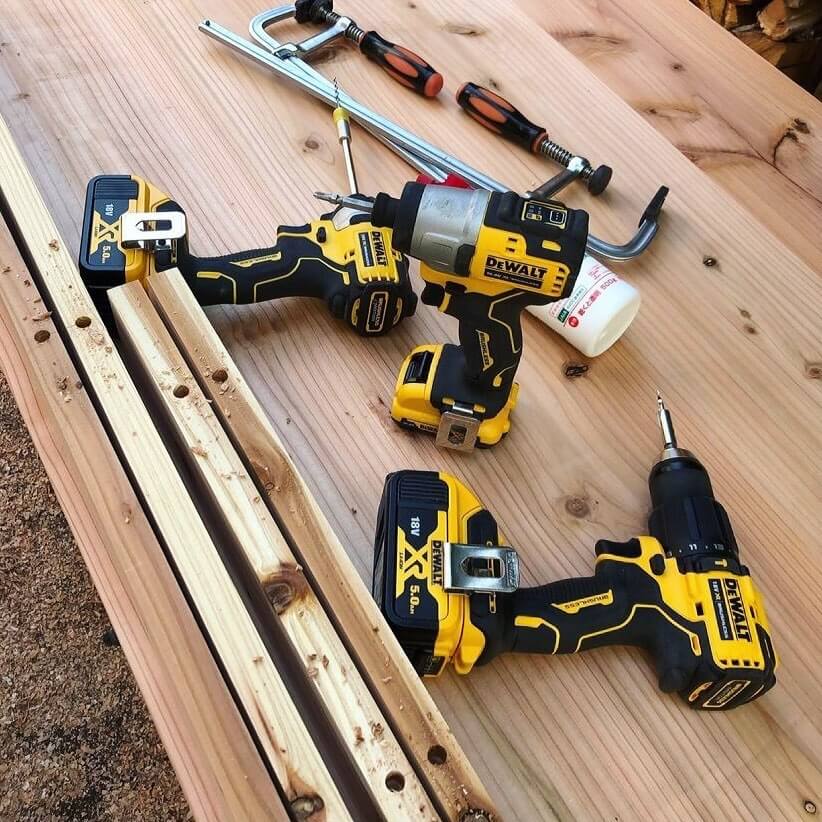
How to Use an Impact Driver to Drill Concrete
For someone who only wants to drill one or two holes in concrete and who already has an impact driver, it is possible to do the job. It takes more time and effort but may be worth it for a small job where you don’t want to buy another power tool.
Here’s how to use an impact drill to drill into concrete:
Step 1
Use the correct impact driver masonry bits. Get a whole set of masonry bits that are designed for an impact hammer. Drill bits that are not designed for an impact hammer may break or shatter and should not be used for this job.
Step 2
Mark the center of the hole, and use your smallest masonry bit to drill, applying gentle but steady pressure. If you feel the drill resist, then reduce pressure.
Step 3
If you feel any stress or the slightest bind, then stop. Increase the size of your drill bit by one increment, and drill again to the same depth. If the bit binds again, take a hardened nail, insert it into the hole, and hit it with a hammer to break up the concrete inside.
Step 4
Continue drilling with that diameter to the desired depth, and attempt to keep the impact driver as steady as possible to prevent breaking the drill bit.
Step 5
Increase drill bits by one-eighth of an inch at a time until you have the desired depth and diameter. If necessary, repeat the nail and hammer periodically to break up the concrete and allow the drilling to continue.
Note, if you don’t have access to a hammer drill or rotary hammer, it is a more affordable alternative and may be worth attempting. If using your impact driver or even drill driver, just remember to use the correct drill bit.
As you can see, this method is slower, more laborious, and potentially less precise than using a hammer drill or rotary hammer to drill into concrete.
The Difference Between Impact Drivers and Hammer Drills
Hammer drills are the preferred tool for drilling into concrete and masonry. They work by combining the rotational torque of a drill with repeated percussion from behind, forcing the drill bit forward into the work. It’s a tool specifically designed for drilling into tough concrete surfaces.
Impact drivers also have a percussive impact, but their impact is rotational to increase torque rather than forward motion like a hammer.
An impact driver operates like using a hammer to bang on a wrench to loosen a sticky socket rather than using a hammer to drive a nail. This high rotational force allows impact drivers to drive screws without slipping or stripping but makes them unsuitable for drilling concrete.
Because of the way that pressure and power are applied differently in these tools, you can’t really use an impact driver to drill into thick concrete, even though they produce a high amount of torque and power.
In fact, the ideal tool for drilling into concrete is yet a third tool, called a “rotary hammer.” A rotary hammer drill has more power than a standard hammer drill and can be used in drill mode, hammer drill mode, or hammer-only mode, in which case they work as a small jackhammer.
For those who do a lot of drilling into concrete and masonry, a rotary hammer is an optimal tool to be used and abused.
Due to its powerful motor and rotary hammering piston mechanism, it will allow you to chew through solid concrete material with minimal effort.
What’s the Difference Between a Rotary Hammer vs Hammer Drill?
If you’re wondering what the difference is between a rotary hammer drill vs hammer drill, it comes down to a few different defining attributes and characteristics that separate the two tools:
- Rotary hammer drills have much more power and torque than standard hammer drills and are also bulky and heavy in comparison to stand hammer drills.
- Rotary hammer drills have an SDS-plus chuck, while standard hammer drills have a three-jaw chuck.
- A rotary hammer drill operates by engaging a piston that produces a pounding action to create forward force due to the increase in pressure in the cylinder.
- A standard hammer drill creates a drill hammer motion by engaging two irregular-shaped discs that rotate, creating friction and causing the chuck to slam forward.
- The cost. Rotary hammers are more expensive than standard hammer drills, so keep that in mind when choosing.
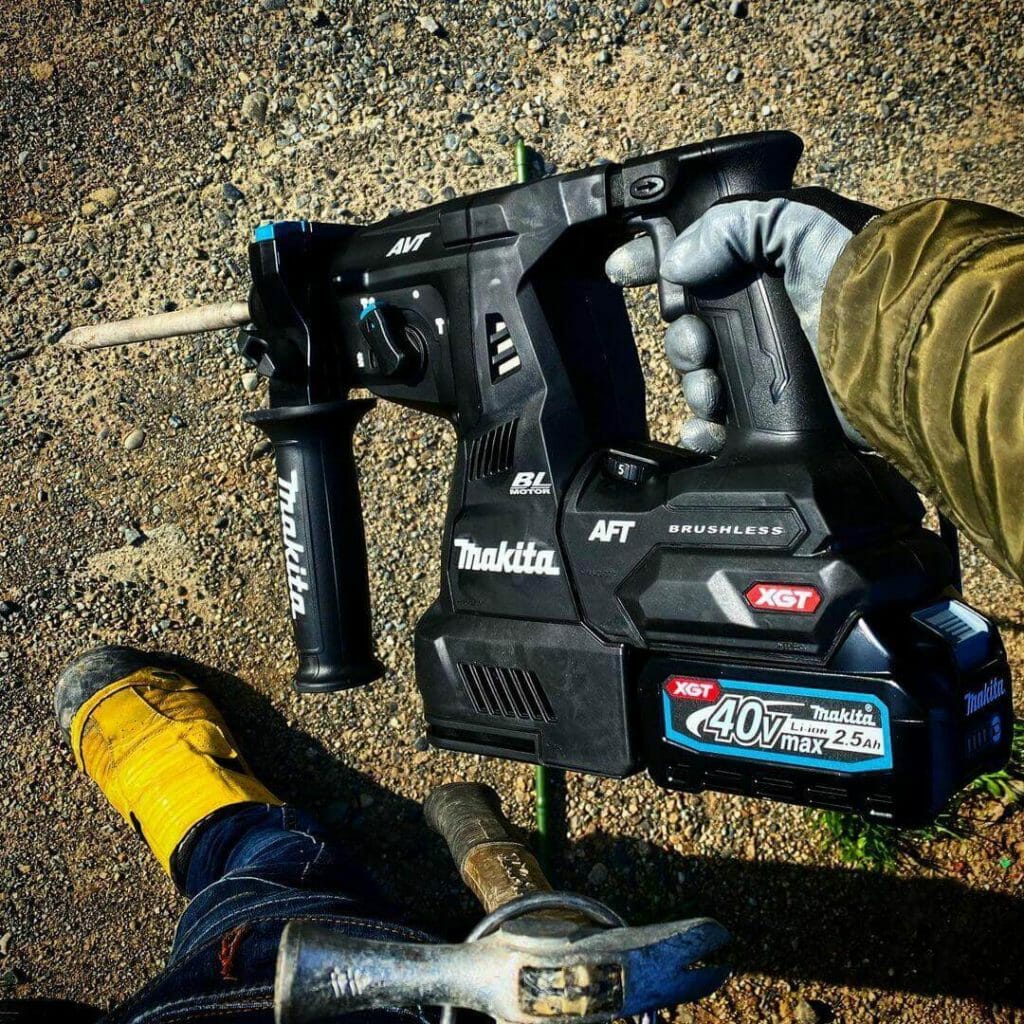
Can I Drill With an Impact Driver?
If you’re drilling holes at 1/4-inch or under, you’ll be able to drill through brick and some concrete with an impact driver. Impact drivers have a freakish amount of torque, but they are not designed to be used like regular drills or hammer drills.
Impact drivers are best suited to driving screws and fastening nuts and bolts.
They’re a tool that can be used for a wide range of tasks, including drilling holes, although if you’re going to drill holes beyond 1/4-inch in diameter through thick concrete, hammer drills are the only tool to use.
As previously mentioned, where impact drivers really shine is fastening nuts and bolts, drilling screws at a rapid rate, and a wide range of other tasks that they can be used for, of course, depending on the application.
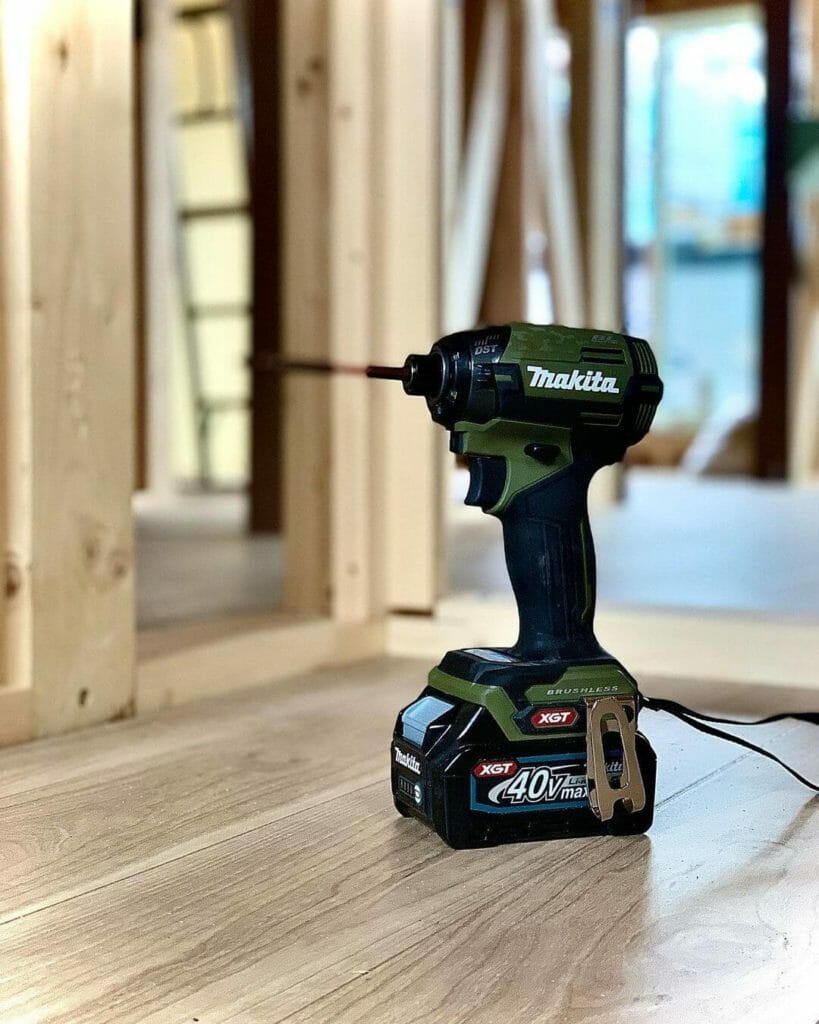
Will a Hammer Drill Go Through Concrete?
With the right masonry drill bit, you’ll be able to drill through concrete fairly easily. Although, in comparison to what a rotary hammer drill can do to a slab of concrete, they’re somewhat inferior.
Another vital thing to consider when attempting to drill concrete effectively is the drill bit you intend to use. Masonry bits with a carbide or durium tip will drill through brick, stone, or thick concrete much more efficiently than a standard, cheaper masonry bit.
While the cheaper bits you come across at your local hardware store seem like a brilliant bargain, they are simply no match when compared with a quality carbide bit that will penetrate hard concrete surfaces at a much faster pace.
The additional cost of these drill bits might seem rather daunting at first, but once you’ve experienced drilling with a high-quality masonry bit, you will appreciate their true value, no matter what drill is used.
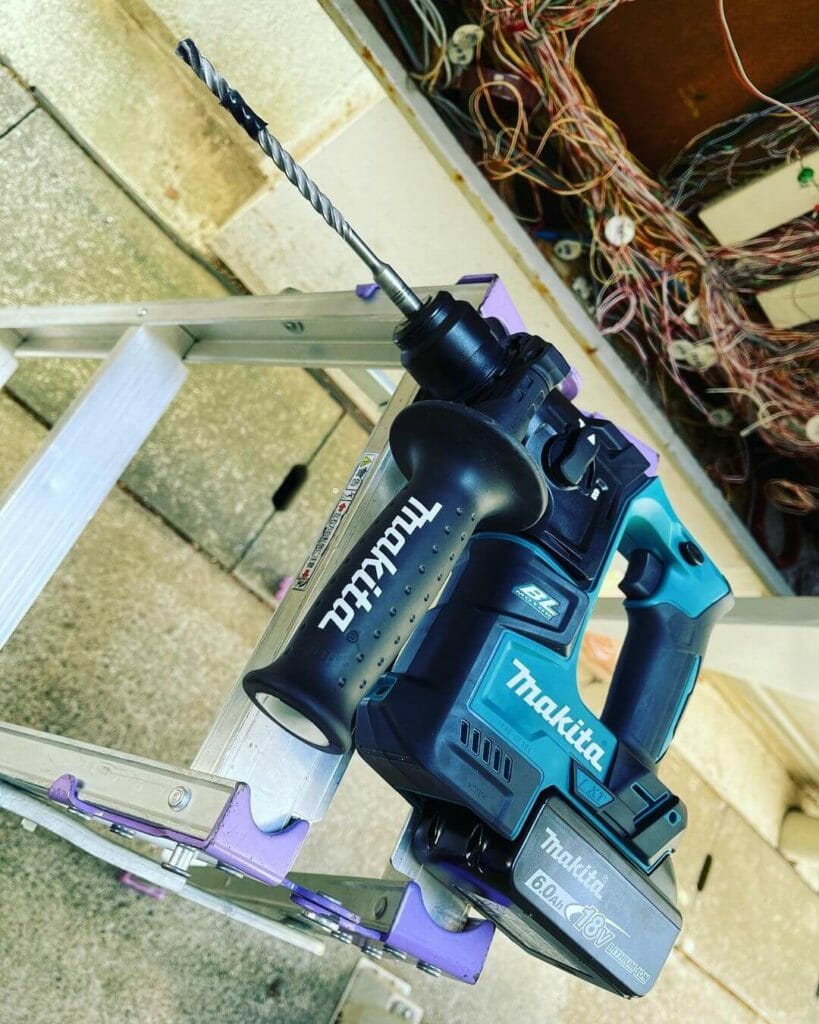
In Conclusion
If you only want to drill one or two small holes into masonry with an impact driver, get the right bits and take your time.
But if you have a larger job to do that involves a lot of drilling into concrete or masonry, hammer drills are the best option. And if you need to drill into concrete on a regular basis, invest in a rotary hammer, which will make the drilling into concrete faster, easier, and more accurate.
Another option is to consider purchasing a high torque cordless impact drill driver that incorporates a hammer drill feature if you intend on only doing light masonry or drilling through basic brickwork.
Depending on the demands of your work, you can find a versatile drill that will suffice when attempting to drill concrete. But if you’re going to be regularly punching holes in concrete, it might be best to consider investing in a quality rotary hammer drill.

